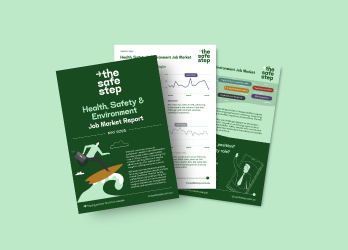What does the Future for HSE professionals look like?
Page Published Date:
August 5, 2019

A question that I’m often asked from my HSE networks is, what does the future for HSE professionals look like?
This usually sparks a conversation, in which we share opinions around where we think the profession currently sits in terms of being prepared to adapt and evolve in the constantly changing world of work i.e. what are the gaps and opportunities for building capability, and how do we measure the effectiveness of development pathways and programs?
The reality is, we often find that HSE professionals don’t currently have all of the necessary capability they require for today and even less are confident that they will be able to adequately meet the needs of the business tomorrow. This might sound overwhelming, even disheartening, however by placing this challenge into the spotlight, we can focus on bridging the gaps to help future proof the profession.
So, what part do organisations play?
Capability gaps are a significant challenge for business and require a clear, forward thinking plan if we are to address them before they widen further. When we ask clients ‘what they need’ for the future any number of the following skills and attributes are mentioned:
- Commerciality and the ability to understand business drivers
- Outcome focus, and the ability to execute
- Analytical insights, and the ability to utilise complex data to shape strategy
- Influencing decisions – the ability to navigate complexity and align around the right course of action
- Strategic mindset, innovation, the ability to bring different ideas/thinking to the table
- Agility, the ability to adapt and evolve
- Relationship management, at all levels, cross functionally, providing levers for change
- Team leadership and the ability to enable others to have impact
- Resilience, in environments that challenge us daily
We’re now at a point where technical knowledge is not mentioned, as it is assumed that knowledge and competence are a given.
The clear focus is on the skills that are critical in functional support roles that enable the individual to translate their technical/functional knowledge, leading to improved performance, productivity and efficiency. The goal for organisations is that their HSE talent create a positive impact through risk-based outcomes and organisational culture.
There are no real surprises regarding the importance of these competencies, however how effectively are we developing our people and enabling them to not only perform today but to adapt and evolve to ensure their relevance into the future?
There are of course, some terrific examples of organisations and individuals doing positive things in building capability and identifying future competencies, however, through my observations there is still a long way to go.
HSE professionals and their organisations recognise the importance of development, however the trend is towards individuals being encouraged and supported to ‘own’ their own learning and development pathway. This can be daunting for some, if not many, as they consider how they turn this from an idea into reality. I do support this notion to an extent, though I need to ask, “do we and the organisations in which we work, support talent sufficiently to ensure they understand how best to access the right development pathways and opportunities?”
Once utilised, how do we then measure the effectiveness and impact post development program or learning pathway to ensure it has been successful?
The capability of the HSE profession, for as long as I have been involved, has been challenged and questioned. Without doubt, there has been positive change, though the question remains, are we doing enough to keep up with the pace of change?
’m always looking out for organisations and individuals who are doing this well and questioning, how do we build a greater collective momentum across the profession to enable the development that is needed for future success?
These are just my observations from my own lens, I don’t have the answers though I know more can and should be done to transform our profession.
I would love to hear your views, stories of success and strategies for the future.




